How the 'Born in China' Filmmakers Turned Cute Panda Videos Into Big-Screen Drama
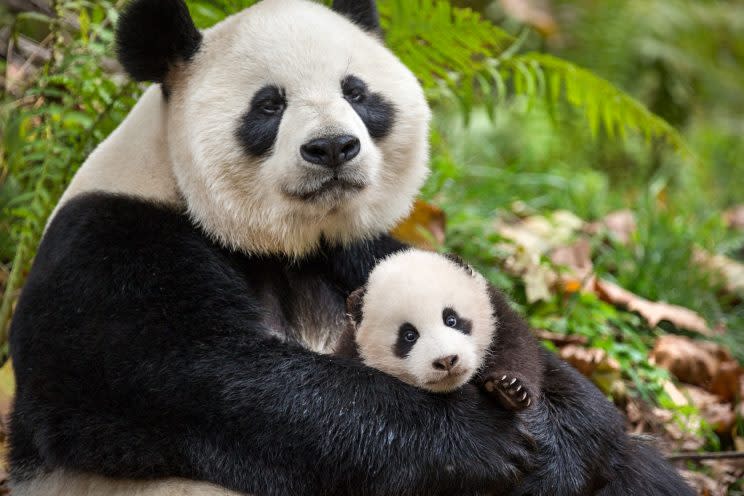
Most Disney movies start with a great story, but Disneynature documentaries start with something else: hundreds of hours of stunning wildlife footage. For Born in China (in theaters April 21), the greatest wildlife cinematographers in the world captured rarely seen images of pandas, golden snub-nosed monkeys, snow leopards, and other creatures living in far-flung corners of China. It was director Chuan Lu’s job to look deeper and find the few minutes of film that would capture each animal family’s unique adventure. As he told Yahoo Movies, “The story is there among the footage, but you need to be very patient to discover it.” Among those stories are a touching tale of a panda mother helping her baby grow up; a riveting thriller about a leopard family trying to survive the winter; and a coming-of-age narrative about a monkey who wants to find his place in the world. Yahoo Movies spoke with Lu and producer Roy Conli (whose résumé of Disney films includes Big Hero 6 and Tangled) about the process of creating Born in China’s three main storylines.
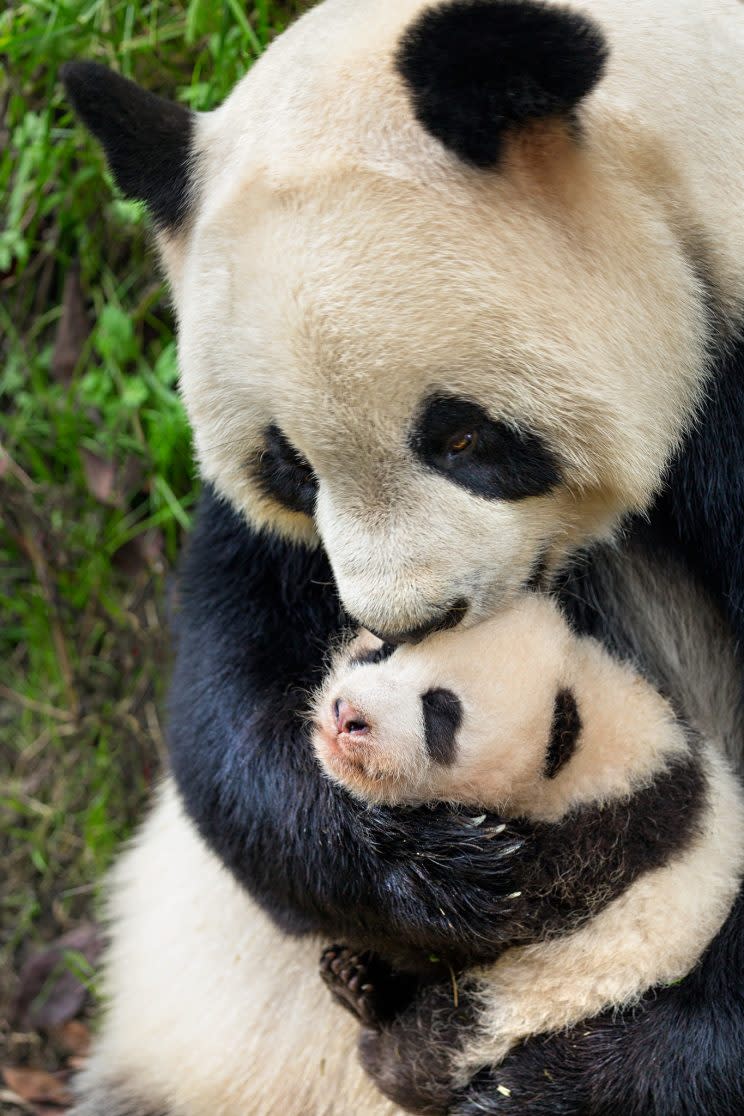
Ya Ya the giant panda
When you’re making a movie about Chinese wildlife, pandas are pretty much mandatory. But Lu initially thought that his footage of first-time mother Ya Ya and her baby wasn’t dramatic enough to make the cut. “The panda mother is always sitting still, and this kid is just crawling around. … We don’t have the shots of predators because [the pandas are] highly protected. So I worry about the footage,” Lu admitted.
Then he came home one night to see his wife feeding their newborn baby. “I got a feeling at that moment that touched my heart so deeply,” he said. Returning to the editing room, he had the profound realization that this simple mother-child story had a dramatic weight all its own. “I made several movies before, and I always want to push my movie to the extreme edge,” explained Lu, who has directed five Chinese feature films. “But when I double-check the footage of panda mother and the cubs, I felt that footage has a special power.”
Getting the intimate footage required the cinematographers to don “panda suits,” black-and-white suits that disguised their human smell and appearance from the animals, and to keep their distance. As Conli put it, “You don’t let an 800-pound panda near your camera equipment.”
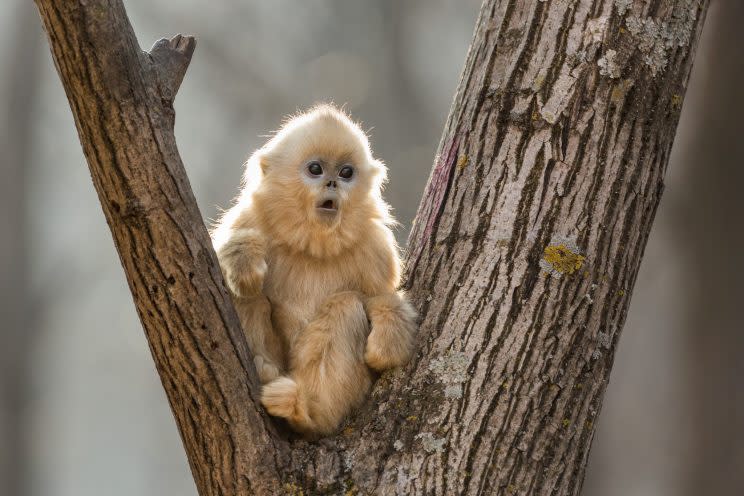
Tao Tao the golden snub-nosed monkey
Lu saw many potential stories in his footage of the forest-dwelling monkeys, whose gymnastic antics belie a complicated social structure. At first, the filmmakers chose as their protagonist a newborn baby girl, who grew up over the course of shooting. But that was before Lu saw a shot of another monkey, the baby’s older brother, sitting apart from the rest of the family. “He [looks like he] feels so lonely, and puts two hands on his knees, sitting just like a kid,” the director said. “So that shot gave me a strong feeling that this boy can be the leading role in this story.” The story of Tao Tao (as he was later named) became that of an adolescent who resents the attention given to his little sister, so he strikes out on his own and falls in with a bad crowd. “I think it was a stroke of genius to focus in on the child that was displaced,” said Conli, “because everyone who has a younger sibling has felt that.” (Lu was briefly tempted to focus his monkey segment on the leader of Tao Tao’s gang, a one-eyed monkey named Rooster, but decided that Rooster’s “Western cowboy story, going against the concept of mainstream society” was better suited to a different film.)
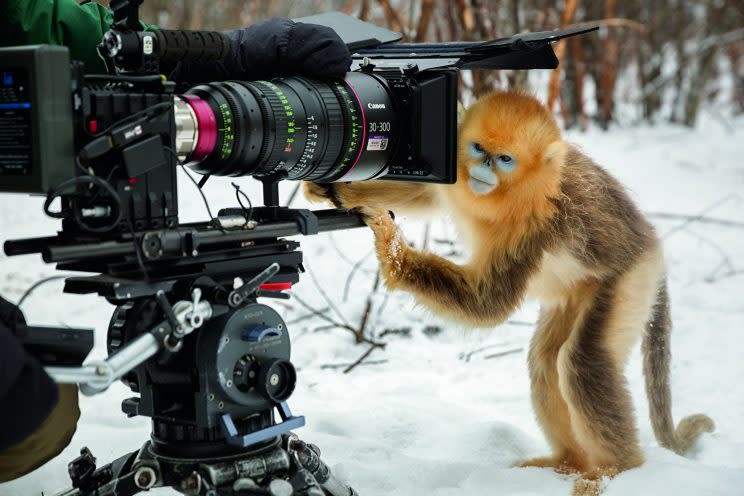
For the cinematographers, part of the challenge of shooting the monkeys was trying not to form a relationship. “The monkeys, of course, they play with you,” said Conli. “The trick is the photographers have to divorce themselves from them because they don’t want to influence their behavior.”
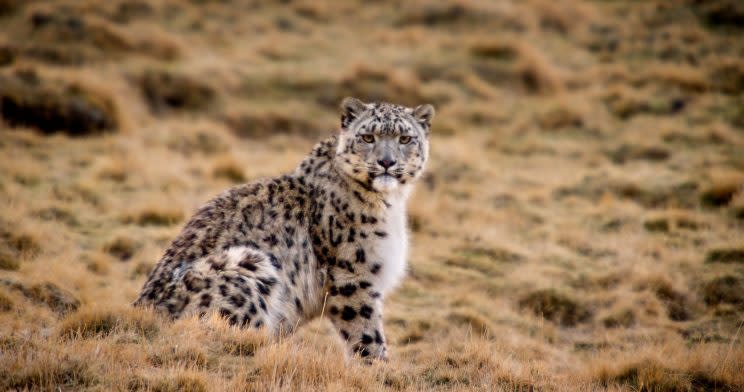
Dawa the snow leopard
The life of a snow leopard is difficult — and so is getting one on film. For the first 90 days of the shoot on China’s Qinghai Plateau, the highest mountain plateau on Earth, cinematographer Shane Moore didn’t get a single shot of his subject. Nevertheless, he assured Lu and Conli that he was on the right track. He returned to the barren, isolated plateau to shoot for a total of 253 days and managed to capture the heart-wrenching story of a mother leopard trying to care for her cubs in nature’s most unforgiving conditions. “Shane Moore has tracked cats since he was 13 years old, working with crews in Wyoming where he grew up,” said Conli. “For him, this was the pinnacle, to be able to track the snow leopard, which is the most elusive animal. And he is now the only cinematographer that has actually gotten footage of cubs in the wild.”
Watch a trailer for Born in China:
Read more from Yahoo Movies:


